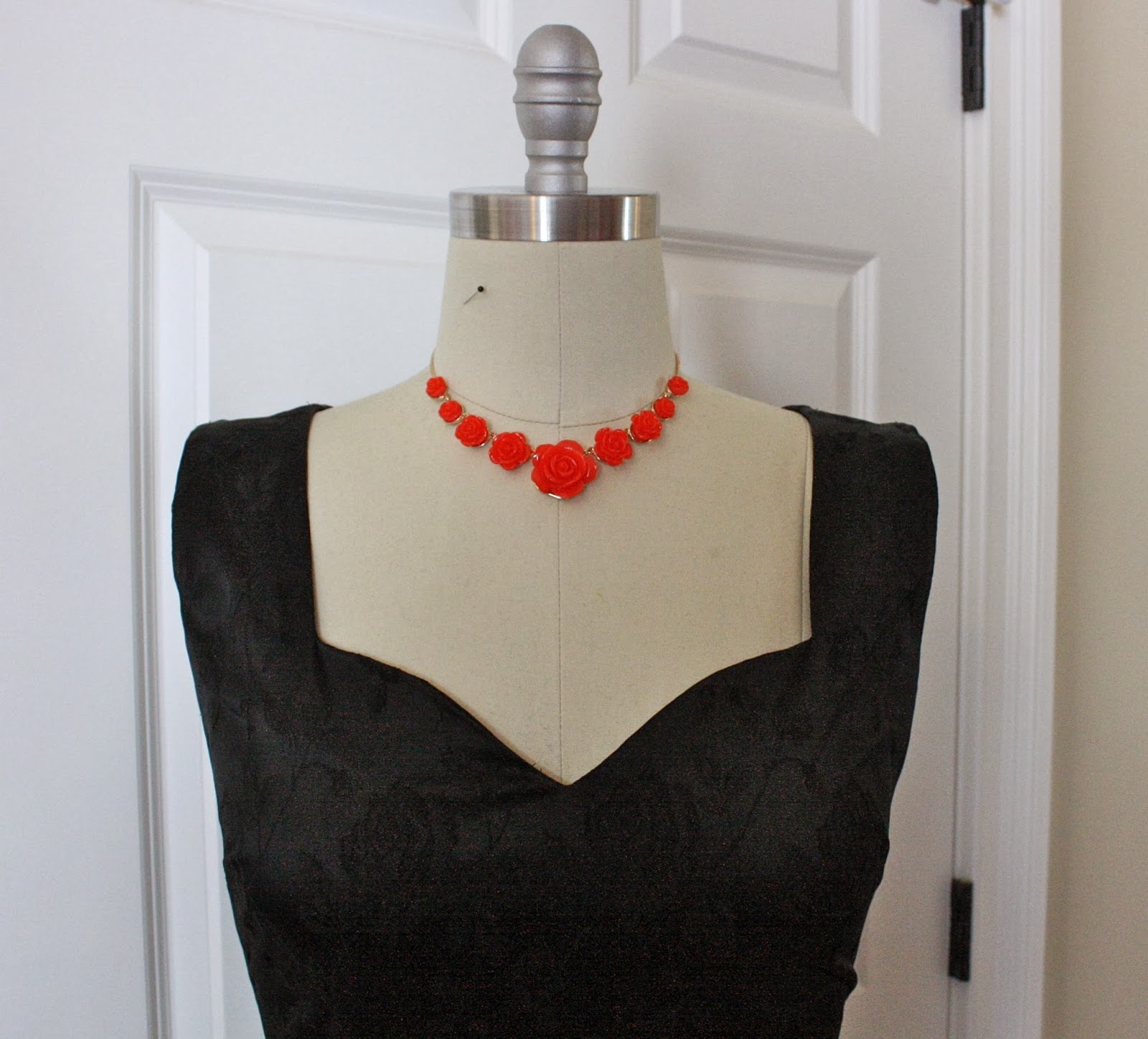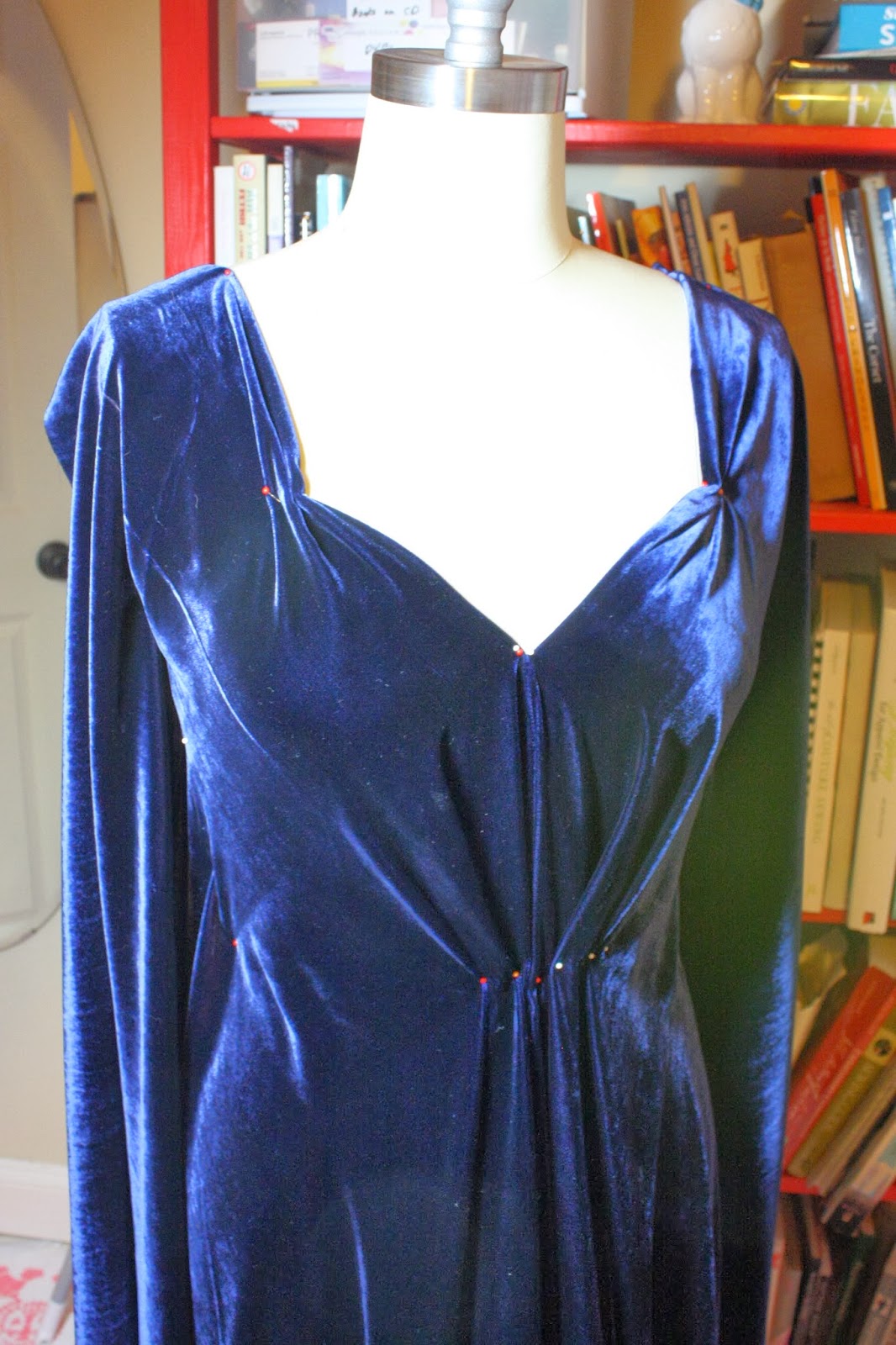They sent me a Professional Female Form with Collapsible Shoulders. It shipped in a large box and was super easy to put together. I had it up in mere minutes.
Here are the things I like about it:
- It's very sturdy and balanced, with a heavy metal base.
- This form is professional quality and has all the marks you need for draping, patternmaking, and fitting: princess seams, armhole plates, side seams, neckline, waistline tape, under bust seams, etc. All these marks serve as guideposts when making a new design.
- The cage helps get a level hem.
- The shoulders are collapsible so you can get garments on and off easily.
- The side seams are raised so you can feel them through fabric.
- It's easy to raise and lower the form with the foot pedal.
- It's pretty! I love the simple linen cover.
- It has a butt!
- The cost is great. At $225 (plus a discount with this post, see below), this is a professional form at an accessible price. For comparison's sake, a Dritz dress form is $260 at full price, though you can often get 40% off with a Joann coupon. Still, I would recommend saving for one like the Shop Company sells. The Dritz forms aren't very sturdy and they lack the marks needed for draping. On the other end of the spectrum, a Wolf Dress Form (the highest-end brand) is $850 for a similar form. I have a vintage Wolf, and I feel that the Shop Company form is close enough in quality that it's an excellent affordable choice.
I did a little draping on the form in my lovely blue velvet to show you the creative potential of designing on a form.
Fun!
On the flip side, here are some potential reasons this form might not work for you:
- Pinnability. (New word alert!) This dress form can be pinned at a side angle only, through the top linen layer only. This is standard for professional dress forms, but some home sewists look for forms that you can pin straight into. If that's the case, you might want to consider this fully pinnable dress form. It's cheaper than the professional form, but you miss out on some things like the collapsible shoulders, metal armhole plates to mark the armscye, and the cage bottom. It also doesn't raise or lower. I would recommend going for the upgraded model and learning to pin sideways--it comes naturally at a certain point.
- Size Range. My measurements put me at a size 12 dress form, and it's quite close to my figure. This range goes up to a size 20, which may be limiting for plus size sewists.
- Adjustments may be necessary. It's unlikely that any form is going to match your figure exactly. In this case, the hips are flatter than mine, so I'm going to need to pad the form. The best way to do this is with batting, which you can cover with a spandex tube. Then you'll need to transfer the forms marks to the outside with twill tape. (Hey, I should do I post on this, huh?) Anyway, my point is that it's not one of those forms that promises that you can adjust it to your exact size in no time flat. (And, for what it's worth, I have one of those forms and found the quality to be lacking.)
Overall, I would highly recommend this form. It's a serious professional form at an affordable price. If you're looking for something that will help you design and drape, I wouldn't hesitate to recommend it to you. If your primary focus is fitting/replicating a hard-to-fit figure, then this may not be the form for you. In any case, I hope this review helps answer some questions about what to look for in a dress form.
And finally: The Shop Company is offering 10% off their dress forms to my readers. Use the code TSCgiveMe10%off on the shopping cart page. Thanks, Shop Company!























































